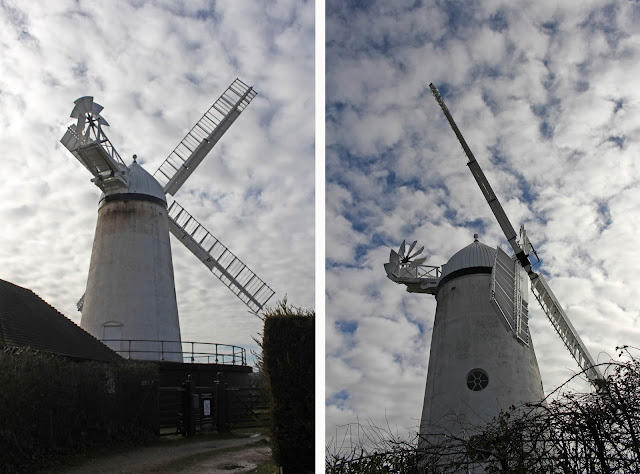It didn’t take long for my friend Jill’s
fascination with windmills to infect me, and these photogenic structures now captivate
me with their intriguing stories and enchanting architecture. Here are two from
my recent visit to East Sussex .
Stone
Cross windmill
Built around 1875 and restored to full
working order between 1995 and 2000, the Stone Cross windmill is, their
signboard claims, ‘one of the finest tower mills ever built in England
The mill still produces flour stone-ground in
the traditional way, which sounds delightful and I’m sure would taste delicious
but do remember that stone-ground means the flour may well contain tiny pieces
of stone, which is one of the reasons why the teeth of people in the past got
rapidly ground down. According to the windmill’s somewhat incomplete website, the
building also contains a small museum and a cafe, though there are no details given of its opening times.
Windmill
Hill windmill
We had driven past this windmill so many
times on our way to places elsewhere but, as there are not a lot of spots to park, we’d never stopped ... until, one day in mid February, on the way
back from Rye Harbour, Jill managed to squeeze us in to the back end of a bus
stop for a few minutes. Unfortunately, the view from the roadside is marred by
the power lines but we did sneak up a driveway for a slightly better view of
the side of this mill.
There had been a
previous windmill on this site – proving just how well this high point
Using
one pair of French Burr stones and another of Derbyshire Peak Britain






No comments:
Post a Comment